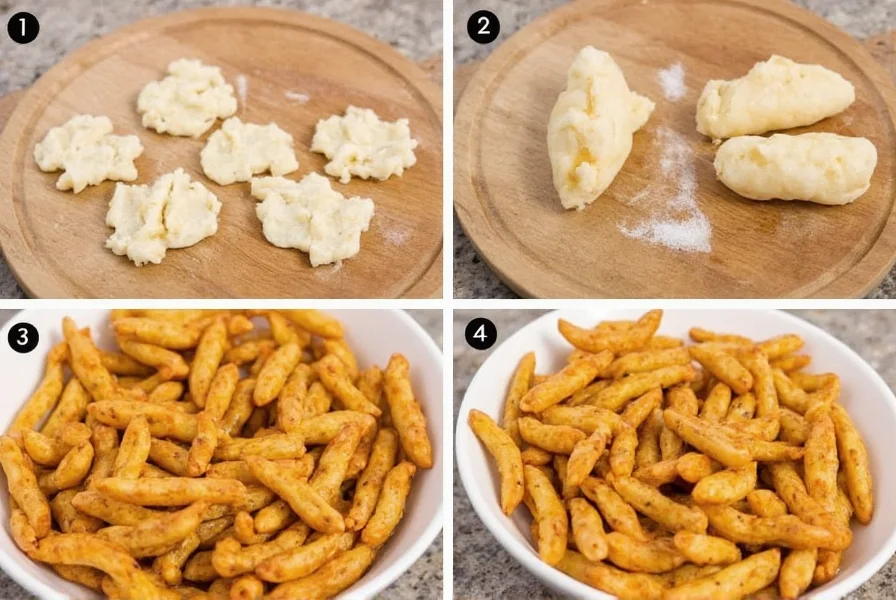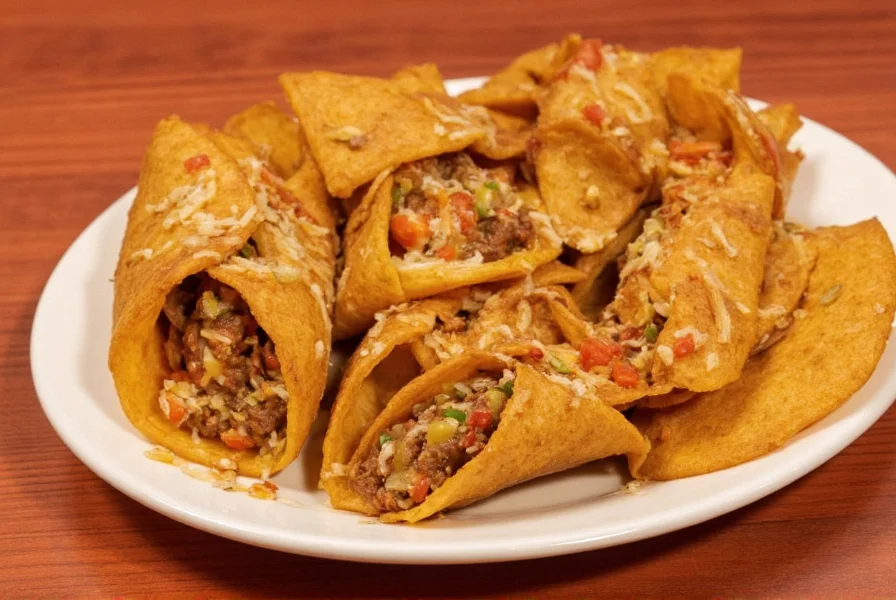Chili crispitos are crispy, bite-sized snack pieces typically made from corn or wheat flour, seasoned with chili powder, garlic, and other spices to deliver a spicy, crunchy snack experience. These popular snack items combine the addictive crunch of traditional crispitos with the bold heat of chili flavoring, creating a snack that satisfies both texture and taste cravings.
When searching for information about chili crispitos, many snack enthusiasts want to understand exactly what makes these spicy bites unique in the crowded snack food market. Unlike standard potato chips or regular crispitos, chili crispitos offer a distinctive combination of crunch and heat that has gained popularity across various snack categories.
What Exactly Are Chili Crispitos?
Chili crispitos represent a specific category within the broader family of crispy snack foods. These bite-sized morsels typically feature:
- Corn or wheat-based dough formed into small, irregular shapes
- Deep-fried or baked to achieve maximum crunch
- Coated with a seasoning blend featuring chili powder as the primary flavor
- Additional flavor components like garlic powder, onion powder, and salt
- Packaged for freshness to maintain optimal crunch
The "crispito" name generally refers to the small, irregular shape of these snacks, which differs from standard chips or puffs. The chili variation specifically targets consumers seeking spicy snack options with authentic heat rather than just artificial flavoring.
History and Development of Spicy Snack Innovations
The evolution of chili-flavored snacks reflects changing consumer preferences toward bolder flavors. While traditional corn snacks have existed since the mid-20th century, the specific chili crispito format emerged as snack manufacturers responded to growing demand for international flavors.
Food historians note that the incorporation of chili flavors into Western snack foods accelerated in the 1990s and 2000s as global cuisine became more mainstream. The precise origin of "crispitos" as a named product varies by manufacturer, with different companies developing similar concepts independently.
Ingredients Analysis: What Goes Into Quality Chili Crispitos
Examining the ingredient list reveals what separates premium chili crispitos from lower-quality alternatives. The best products typically contain:
| Ingredient Category | High-Quality Products | Lower-Quality Alternatives |
|---|---|---|
| Base Ingredients | Corn masa, whole grain flours | Refined flours, corn meal byproducts |
| Fat Source | Avocado oil, sunflower oil | Partially hydrogenated oils |
| Chili Components | Real chili powder, smoked paprika | Artificial chili flavor, excessive sodium |
| Additional Flavorings | Garlic powder, onion powder, natural spices | MSG, artificial flavors, excessive sugar |
When evaluating different brands of chili crispitos, consumers should look for products that prioritize real food ingredients over artificial flavorings and excessive sodium. The best options use genuine chili peppers in their seasoning blends rather than relying solely on artificial heat enhancers.
Where to Find Authentic Chili Crispitos
Chili crispitos have become widely available through multiple channels:
- Grocery stores: Most major supermarkets now carry at least one brand in their snack aisles
- International markets: Often feature authentic versions from specific regional producers
- Online retailers: Provide access to specialty brands not available locally
- Convenience stores: Typically stock popular mainstream brands
For those seeking artisanal or small-batch chili crispitos, local farmers' markets and specialty food stores often feature independent producers creating unique variations. These small-batch options frequently use higher quality ingredients and more complex flavor profiles than mass-produced alternatives.

Nutritional Profile and Dietary Considerations
Understanding the nutritional content helps consumers make informed choices about incorporating chili crispitos into their diets. A typical serving (about 1 ounce or 28 grams) generally contains:
- Calories: 140-160
- Total fat: 7-9g (primarily from the cooking oil)
- Carbohydrates: 18-22g
- Protein: 2-3g
- Sodium: 200-350mg (varies significantly by brand)
- Fiber: 1-2g
For health-conscious consumers, several brands now offer baked versions with reduced fat content and lower sodium options. Some specialty producers create organic, non-GMO, or gluten-free chili crispitos to accommodate specific dietary needs.
Culinary Applications Beyond Snacking
While delicious as a standalone snack, chili crispitos offer versatility in culinary applications:
- Salad topper: Adds crunch and spice to green salads
- Crumbled garnish: Sprinkled over soups, chili, or tacos for texture contrast
- Crunchy coating: Crushed and used as a coating for proteins
- Trail mix component: Combined with nuts and dried fruit for a spicy-sweet trail mix
- Cheese board accent: Complements cheeses and charcuterie
Homemade Chili Crispitos Recipe
For those interested in making their own version, this simple recipe produces authentic-tasting chili crispitos:
- Mix 1 cup masa harina, 1/2 cup all-purpose flour, 1/2 teaspoon baking powder, and 1/4 teaspoon salt
- Add 1/4 cup warm water and 1 tablespoon olive oil, mixing until a dough forms
- Roll dough thin (about 1/8 inch) and cut into small irregular shapes
- Fry in 350°F oil until golden and crisp (about 1-2 minutes)
- Drain on paper towels and immediately toss with seasoning blend
- Seasoning blend: 1 teaspoon chili powder, 1/2 teaspoon garlic powder, 1/4 teaspoon cayenne, 1/2 teaspoon salt
This homemade version allows customization of the heat level and avoids preservatives found in commercial products. For a baked alternative, arrange the cut pieces on a parchment-lined baking sheet and bake at 375°F for 12-15 minutes until crisp.

Chili Crispitos vs. Similar Snack Products
Understanding the differences between chili crispitos and comparable snacks helps consumers select the right product for their preferences:
- Chili crispitos vs. chili cheese puffs: Crispitos have a denser, crunchier texture while cheese puffs are airy and melt in your mouth
- Chili crispitos vs. tortilla chips: Crispitos are smaller, more irregularly shaped, and often have more intense seasoning
- Chili crispitos vs. chili-flavored popcorn: Crispitos offer a more substantial crunch and different mouthfeel
- Chili crispitos vs. traditional chili crisp condiment: Crispitos are a snack food while chili crisp is a sauce or condiment
The unique texture profile of chili crispitos makes them stand out in the snack category, offering a satisfying crunch that doesn't dissolve quickly in the mouth like some cheese-based snacks.
Consumer Trends in Spicy Snack Preferences
Market research indicates growing consumer interest in spicy snack options, with chili crispitos benefiting from several key trends:
- Increasing acceptance of bold flavors among mainstream consumers
- Rising popularity of global cuisines influencing snack development
- Preference for snacks with distinctive textures and mouthfeels
- Growing demand for snacks with authentic, recognizable ingredients
- Expansion of flavor intensity options to accommodate different heat preferences
These trends suggest that chili crispitos will continue evolving with new flavor variations and healthier preparation methods to meet changing consumer expectations.
Frequently Asked Questions About Chili Crispitos
What makes chili crispitos different from regular chips?
Chili crispitos feature a distinctive irregular shape and denser texture compared to standard chips. They're typically made from corn masa rather than sliced potatoes, resulting in a more substantial crunch that lasts longer in the mouth. The seasoning is also specifically formulated to deliver consistent chili flavor throughout each piece.
Are chili crispitos gluten-free?
Many traditional chili crispitos contain wheat flour and are not gluten-free. However, several manufacturers now produce gluten-free versions using alternative flours like rice flour or corn masa. Always check the packaging for specific gluten-free certification if this is a dietary concern.
How spicy are chili crispitos typically?
The heat level varies significantly by brand, ranging from mildly spicy to quite hot. Most mainstream brands aim for a medium heat level that's approachable for average consumers. Specialty brands often offer multiple heat levels, from mild to extra hot, allowing consumers to select their preferred spice intensity.
Can I make chili crispitos at home without deep frying?
Yes, you can bake chili crispitos for a healthier version. Roll the dough thin, cut into small pieces, and bake at 375°F on a parchment-lined baking sheet for 12-15 minutes until golden and crisp. While the texture won't be identical to deep-fried versions, baked crispitos still deliver satisfying crunch with less oil absorption.
What's the best way to store chili crispitos to maintain freshness?
To maintain maximum crunch, store chili crispitos in an airtight container at room temperature. Once opened, consume within 3-5 days for optimal texture. Avoid refrigeration, which can introduce moisture and make them lose crispness. For longer storage, freeze in a sealed container and allow to come to room temperature before serving.











 浙公网安备
33010002000092号
浙公网安备
33010002000092号 浙B2-20120091-4
浙B2-20120091-4